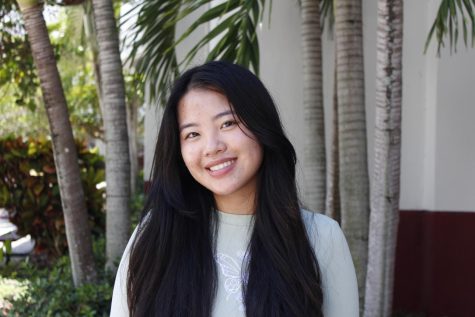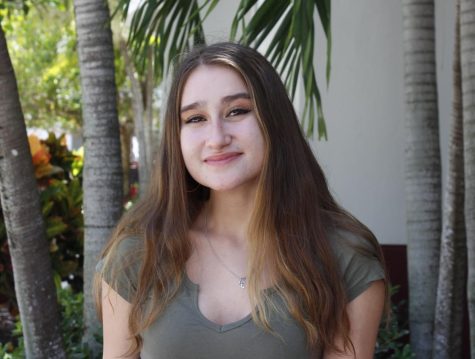Studies show minority students inadequately represented in school curriculum
Diversity allows more open-mindedness in the learning process, as students are able to share their cultural experiences.
February 22, 2022
Florida holds one of the highest diversity indexes in the nation at 64.1, as reported by the 2020 United States Census Bureau. Census population projections predict that the U.S. will become “minority white” in 2045. As of 2019, the nation’s under age 15 population is already there, as 50.1% of this age demographic is comprised of racial minorities.
According to educational research, in order to prepare students for the future of society, which is increasingly diverse, students need to be exposed to greater diversity in curriculum. This allows for a broader understanding of the various cultures in the population. The increased call for diversity is part of the larger multicultural education movement, which aims to restructure curricula and education institutions so that students from diverse backgrounds can experience equal educational experiences.
According to a 2018 article by The Century Foundation contributor Samantha Washington, “students who attend diverse public schools learn more, exhibit less racial prejudice, and report higher overall self-confidence.” Washington reports that crucial to seeing the various benefits of diversity in public schools is the “implementation of a curricula which reflects the history and culture of students of all backgrounds.”
Educational research also shows that by implementing more diversity in curriculum, students can gain empathy, open-mindedness and confidence. Despite the benefits, according to Washington, “studies have shown that most students lack a basic understanding of such things as slavery, rudimentary world geography, or the history of indigenous peoples. According to a 2015 study by the National Museum of African American History and Culture, most history classrooms devote only 8% of total class time to Black history.
A brief by the American Psychological Association reviewed evidence that insufficient approaches to racial diversity can result in implicit bias toward minority groups. Not only can this affect education, but it can intensify discriminatory behavior and disrupt cognitive processes. Insensitivity to other cultures can negatively impact learning as students can become offended, reluctant to participate, avoid coming to school or become disruptive in class.
State and Local Curriculum
The Florida Department of Education establishes the criteria for all state curriculum. Florida Statutes provide the required courses and instruction to ensure students fulfill their State Board of Education-adopted standards. According to the FLDOE website, approved books and materials are used to “meet the highest standards for professionalism and historic accuracy.”
As long as Florida academic standards are taught, teachers are able to use any curriculum materials available to them. Many teachers use supplementary materials to enhance the curriculum offered through textbooks adopted by their school districts.
Logically, language arts and social studies courses most directly correlate with diversity and inclusion as they commonly discuss historical novels or events. Electives such as the performing arts or world languages also integrate culture to reflect human creativity or divulge into heritage and traditions. Nevertheless, diversity can extend to virtually any course, including science and math classes.
Broward County Public Schools has a multicultural education initiative that “aims at helping all students in the development of knowledge, abilities and attitudes needed to survive and function effectively in a culturally diverse society.” BCPS offers high school electives to meet Florida law that requires schools to teach about “the history of the Holocaust, the history of African Americans, Hispanic contributions and women’s contributions.” MSD offers both History of the Holocaust Honors and African History Honors.
Outside of those specific electives, each department and grade level sets the curriculum for various MSD core courses, and decides which materials to incorporate.
Being Inclusive
To integrate more diversity in everyday curriculum, teachers can rely on performance techniques and other classroom engagement strategies to enhance the varying experiences in the classroom, including fostering student discussion and avoiding explicit bias.
According to an article by Jill Anderson, a senior digital content creator from the Harvard Graduate School of Education, other recommendations include adding more books that represent LGBTQIA+ issues, gender diversity, people of color and people with disabilities.
“I think it’s good to bring different cultures into pieces if I can find them, especially if they are worthy and show a structure of language, themes of drama, or what was important at the time,” drama teacher Melody Herzfeld said. “There is no subject that can’t be touched when it’s put on the stage because what the stage does is allow you to have an imaginary reality, to actually suppose on something and watch it come out and reveal itself, whether it’s beautiful, or it’s really ugly and hurtful.”
In addition, ethnic, cultural and religious minorities should be consistently featured within literature.
“A lot of people don’t know their own history, and it changes how you think, especially going to a predominately-white school. Not knowing your own history and who you are can really mess with you as a person,” senior Devin Moon said.
Building an awareness of international customs and relations is imperative as it introduces new ideas and helps combat xenophobic beliefs. As the world continues to globalize and become more interrelated, students will be expected to interact with new people in their own lives and in their careers. Therefore, some teachers attempt to create positive opportunities by having their students share their cultural experiences in the classroom.
“I think diversity in school curriculum isn’t a suggestion, it’s necessary. You have to represent the country and the population of your students, you have to represent everyone,” psychology teacher Dawn Taveres said. “In fact, I think in South Florida, we have many different perspectives than a lot of other parts of the country. I always talk about that in my class.”
Teachers adding to the curriculum often choose to divert from their traditional methods of textbook teaching to feature the lesser known heroes of history or figures of influence within their subject matter.
“I think that a lot of the scientists that we tend to focus on are old white guys in the lab, and there’s so much more to that. Last year in Marine Science 1 at the beginning of the year, I had my students research famous marine scientists. Everyone that I chose as options to select were either minorities or women,” environmental science teacher Tammy Orilio said.
Obstacles
Despite the benefits of increased diversity and the drawbacks to its absence in the curriculum, there can be significant obstacles in its implementation.
Fear can limit change in the classroom. Teachers may be concerned on how to address sensitive stereotypes or answer a student’s controversial question. This often keeps teachers away from adding diverse books or materials to the curriculum.
“In our nation, we haven’t been good at learning how to talk across differences in a respectful way. And that is supposed to be the fabric of our democracy,” Pamela Mason, director of the Language and Literacy Master’s program and senior lecturer on education at the Harvard Graduate School of Education, said in an interview for an article entitled “Hooked on the Classics” by Jill Anderson.
According to Anderson, teacher training programs do not always include work about race and identity or address cultural assumptions.
“I think the fact that [I am] a teacher who is not necessarily from Parkland, who grew up in the South Bronx and who is from a Caribbean island, I give a different perspective than students are accustomed to because my teaching style is different,” English teacher Nadeen Ashman said. “The curriculum is the curriculum, but we can study novels like ‘The Hate U Give’ that talks about integrated racism or ‘Dear Martin’ that talks about incarceration in the youth. We’re doing a disservice as a teacher if we don’t teach students how to think and how to change the world they’re going out into.”
According to the American Library Association’s Office for Intellectual Freedom, “New books like ‘The Hate U Give’ get challenged as ‘anti-cop’ and for profanity, drug use, and sexual references.” These “untraditional” books are subject to scrutiny, despite sharing elements similar to that of American classics.
Budgets can also constrain the ability to add diversity to the curriculum. Broward County Public Schools adopts textbooks for most courses. Outside of those provided materials, schools or departments have to purchase additional materials, and sometimes individual teachers will spend their personal money to buy additional curriculum materials.
Diversity in MSD curriculum
Within the 9th-12th curriculum maps for the MSD English department, 69% of the required books, short stories and poems were authored by white males. Women, Black Americans and other minorities only constituted 31% of the total available texts to choose from within the department.
“I’ve seen [diversity in culture] mostly in all the history classes I’ve taken as you have to understand a lot of different perspectives of a lot of different groups to pass the class,” junior Spencer Brenner said. “If I’m being honest, that’s most of what I can think of. English has for sure had some [diversity], but most of it is focused on the ‘Old Masters,’ which just happen to be Europeans.”
In a poll of 365 MSD students, 44% of participants stated that they believe there is diversity in the current curriculum, while 19% stated they did not believe there is diversity in the current curriculum and 37% stated they were unsure.
It is important to note, that MSD’s student body is 74% white, and the survey did not ask for racial demographics of the respondents. Therefore, it cannot be determined whether the students who believe there is adequate representation in the curriculum are made up of a diverse group of students or not. The survey data available does not determine whether minority students feel represented in the curriculum or not.
“There’s a lack of diversity because students have to seek out their own history in their history classes and in their English classes. They felt that they were reading things that didn’t represent them. The words that were being used [made them feel like] they were excluded,” Ashman said. “The fact that there is a lack of diversity in the curriculum is not beneficial to the students because our student body is changing rapidly. The students need to hear their voices from their ancestors.”
In the same survey, 79% of MSD students expressed a preference for teachers to supplement their curriculum with newer material of their choosing, instead of following traditional materials, like classic literature.
“[Teachers should] tell the full background of [my culture’s] side. I think it would be so effective [to incorporate more diversity in the curriculum] because [teachers] make it seem like we got out of the mud and we did it. We didn’t, we got thrown in the mud,” senior Anaya Murray said.
According to the survey, 65% of MSD students say their teachers do not often have their students share their own cultural experiences in class.
“One of the only times I remember is in biology freshman year when my friend brought in tea and that somehow got my teacher asking about where we were all from,” Brenner said. “The only other time I remember was this year when my history teacher asked where my class was from. That’s really the only time any teacher asked about something close to my cultural experiences.”
While there is evidence that teachers at MSD are utilizing diverse curriculum materials, the survey of MSD students shows that there is room for much more to be done. With the shifting demographics of the U.S. population that is increasingly becoming “minority white,” it is important that the school and others across the state continue to work adding more diverse materials to their curriculum in order to create an environment where all students feel safe, heard and represented.
This story was originally published in the February 2022 Eagle Eye print edition.











